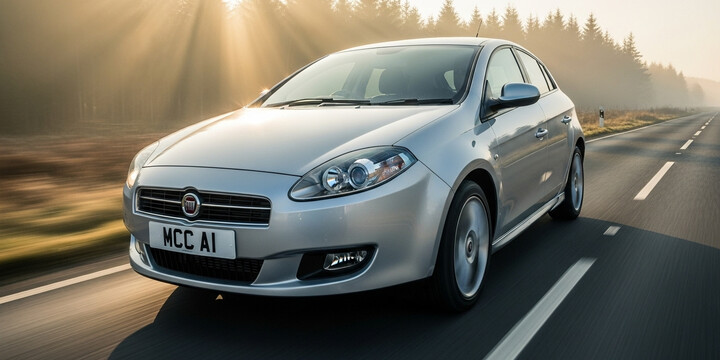
FIAT BRAVO (1995-02) 3DR HATCHBACK 1.6 16V 100 HLX
The FIAT BRAVO (1995-02) 3DR HATCHBACK 1.6 16V 100 HLX is a compact and practical hatchback that appeals to a wide range of drivers in the UK. Known for its stylish design and urban-friendly size, this car is well-suited for city dwellers, first-time drivers, and those looking for an economical and easy-to-manoeuvre vehicle. With an average recorded mileage of around 67,311 miles and a typical annual mileage of approximately 6,138 miles, the FIAT BRAVO HLX demonstrates reliability for everyday commuting and short trips.
What makes the FIAT BRAVO HLX stand out in its class is its balance of affordability, distinctive design, and straightforward driving experience. The 1.6 petrol engine offers reasonable fuel economy for its era, making it a practical choice for budget-conscious buyers. Its reputation is further supported by its popularity within the used car market, with an average private sale valuation of around £306. Compared to other compact hatchbacks from its time, the FIAT BRAVO HLX offers a unique blend of Italian charm and functional everyday usability, making it a solid option for those seeking a reliable and stylish used car.

average use

The most recent mileage readings for the Fiat Bravo (1995-02) 3-door hatchback 1.6 16V 100 HLX show an evenly distributed pattern, with approximately one-third of recorded mileages in each of three ranges: 50,000–60,000 miles, 60,000–70,000 miles, and 80,000–90,000 miles. Notably, there are no recent recordings reported between 70,000 and 80,000 miles, nor below 50,000 miles or above 90,000 miles. This balanced distribution suggests a spread of vehicle usage across moderate mileages, with no dominant mileage range emerging from the recent data.

vehicle values

The available data indicates that for the Fiat Bravo (1995-2002) 3-door hatchback 1.6 16V 100 HLX model, all private sale prices fall within the £0 to £1,000 range. This suggests that, at least based on the sample data, the entire private sale market for this specific vehicle is concentrated in the lower price bracket, likely reflecting the vehicle’s age, condition, or market demand. It highlights that these vehicles are generally considered very affordable on the private sale market in the UK.

production years

The data indicates that the majority of the Fiat Bravo (1995-02) 3-door hatchback 1.6 16V 100 HLX models in the sample were manufactured in 2001, accounting for approximately 66.7%. A smaller portion, about 33.3%, were made in 2000. This suggests that, within this sample, the 2001 model year is more prevalent, potentially reflecting a higher production volume or better availability of vehicles from that year.

colour popularity

The data indicates that the main paint colours for the Fiat Bravo (1995-02) 3-door hatchback 1.6 16V 100 HLX are evenly distributed among Grey, Yellow, and Red, each accounting for approximately 33.3% of the vehicles in the sample. This balanced distribution suggests no single colour dominance for this model, highlighting a diverse range of aesthetic preferences among owners.

ownership cycle

The data indicates that, among the sample of Fiat Bravo (1995-2002) 3-door hatchbacks with a 1.6 16V 100 HLX engine, two main groups of registered keepers are observed. Approximately two-thirds (66.7%) of these vehicles have had three registered keepers, while the remaining third (33.3%) have had five registered keepers. This suggests that most vehicles in this sample tend to change owners relatively few times, potentially reflecting stable ownership or longevity in use. The presence of a smaller proportion with five keepers may indicate some vehicles have experienced more frequent ownership changes over their lifespan.

engine choices

The data indicates that for the Fiat Bravo (1995-2002) 3-door hatchback 1.6 16V 100 HLX model, the majority of vehicles (66.7%) have an engine capacity of 1596cc, while a smaller proportion (33.3%) feature an 1581cc engine. Notably, all vehicles in the sample are powered by petrol, with no diesel variants reported. This suggests a fairly consistent engine size around 1.6 liters and uniform fuel type across the sample.












